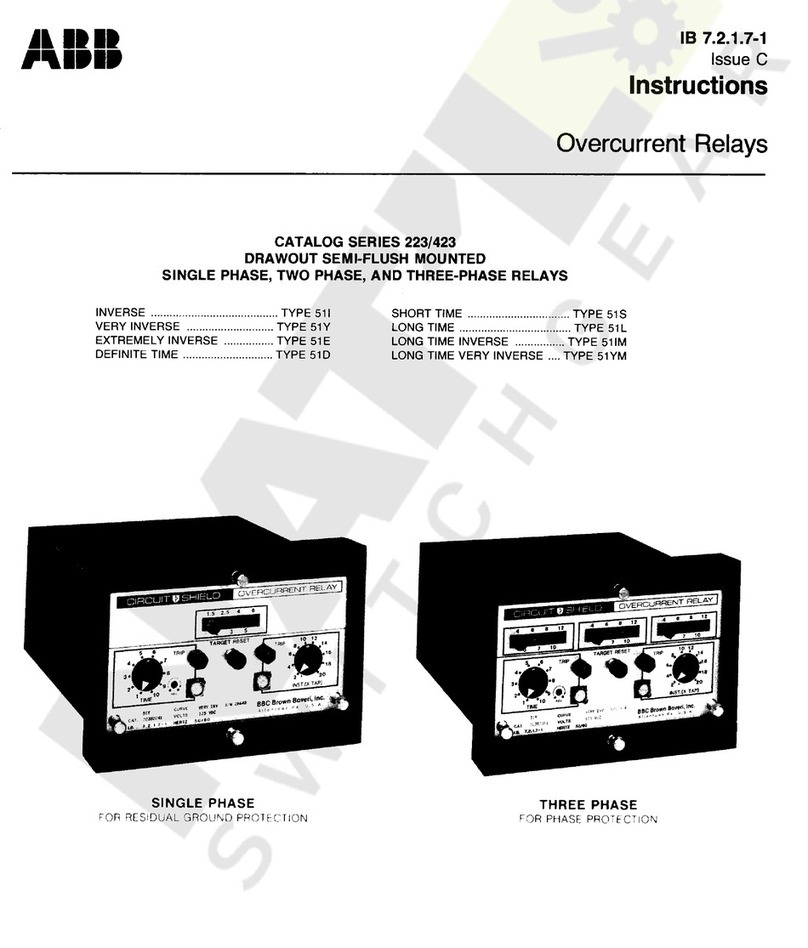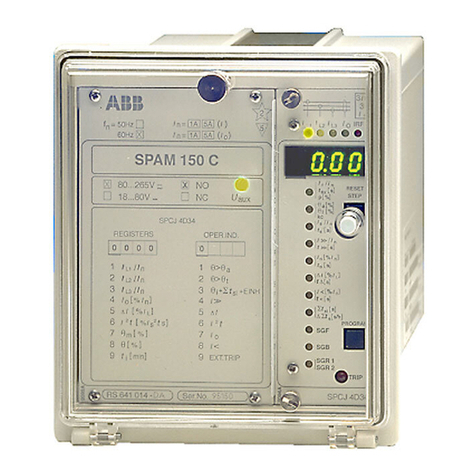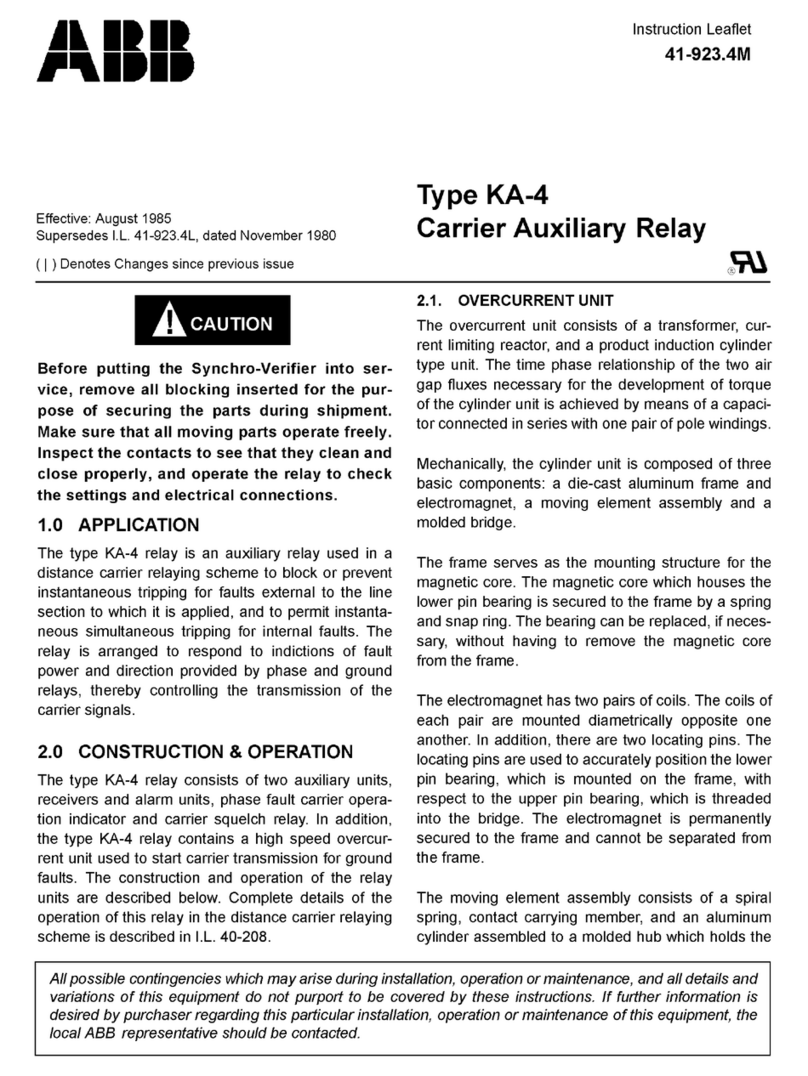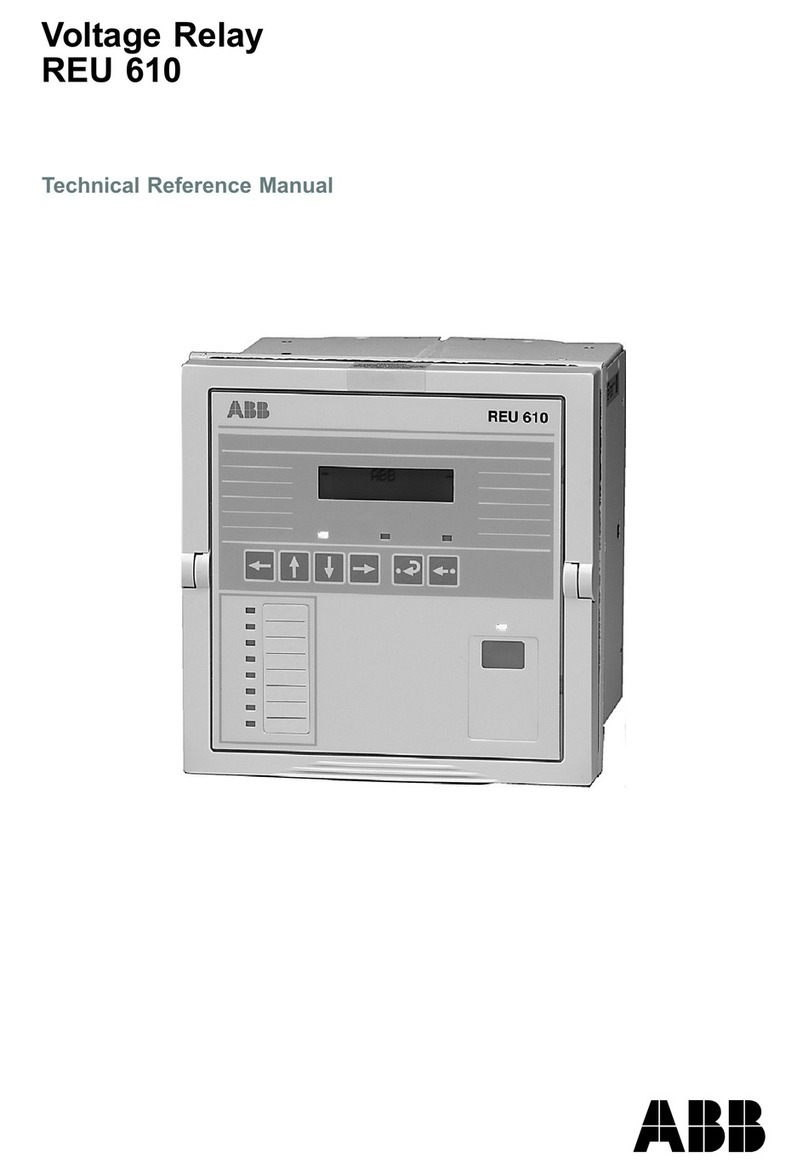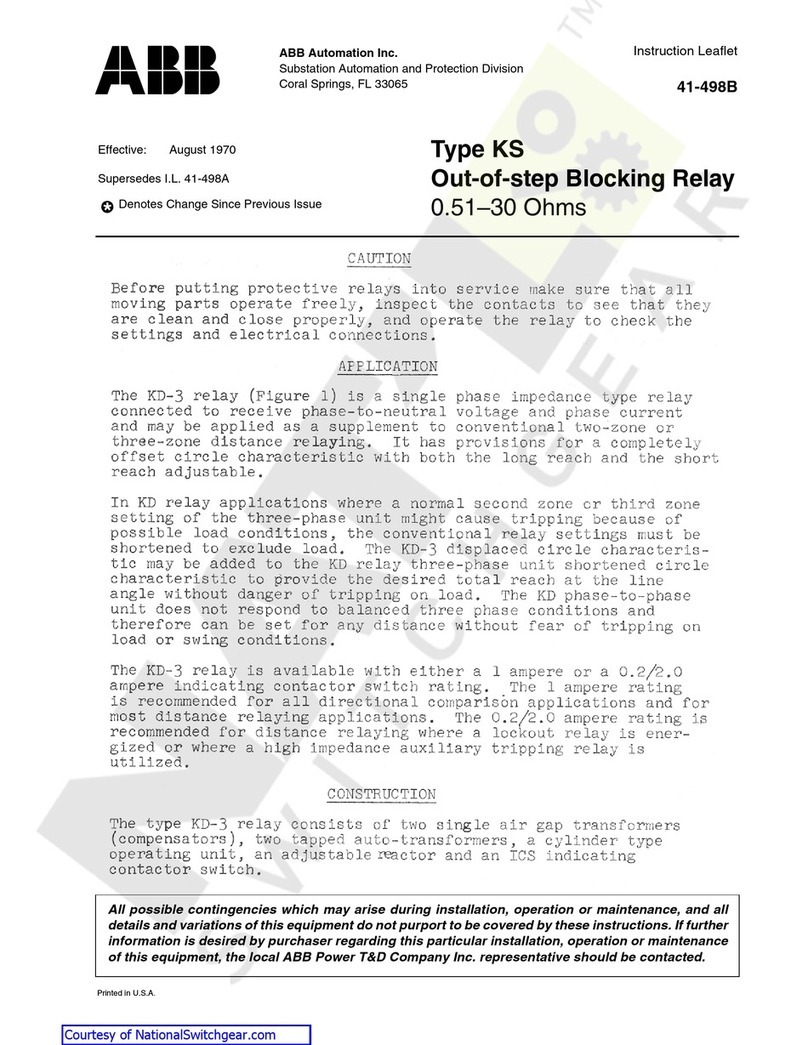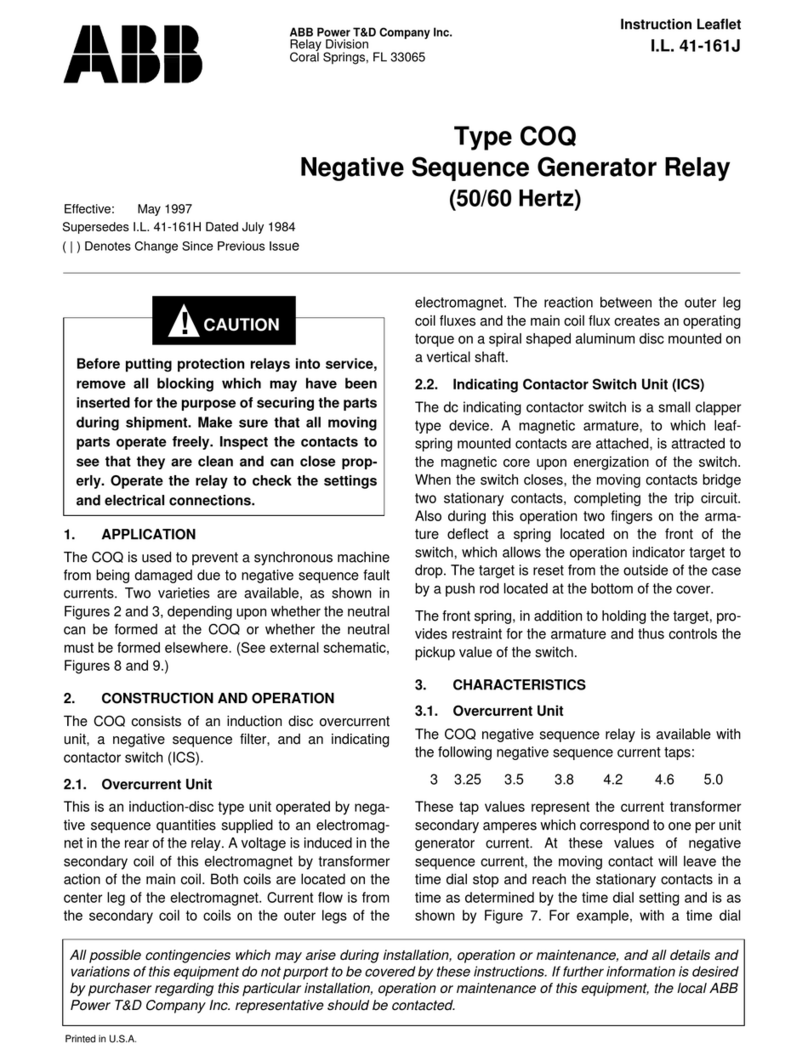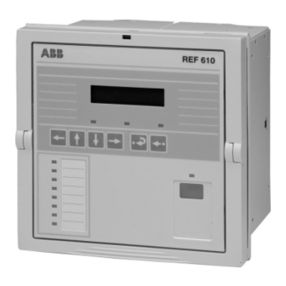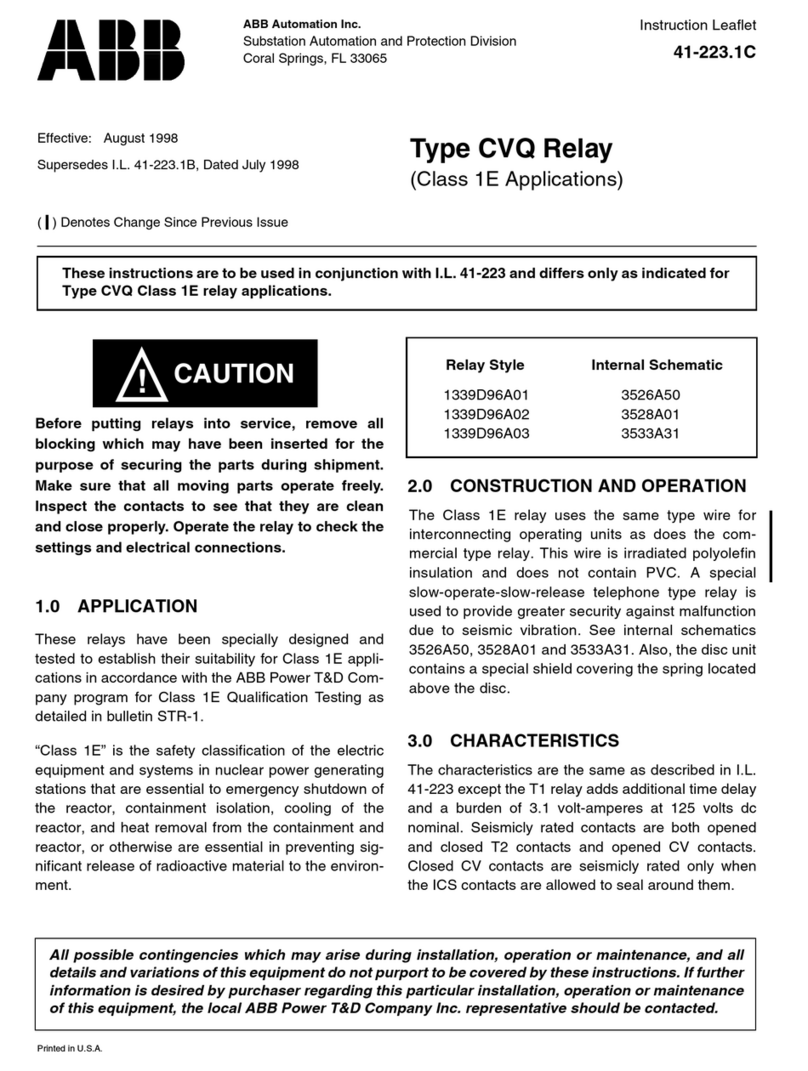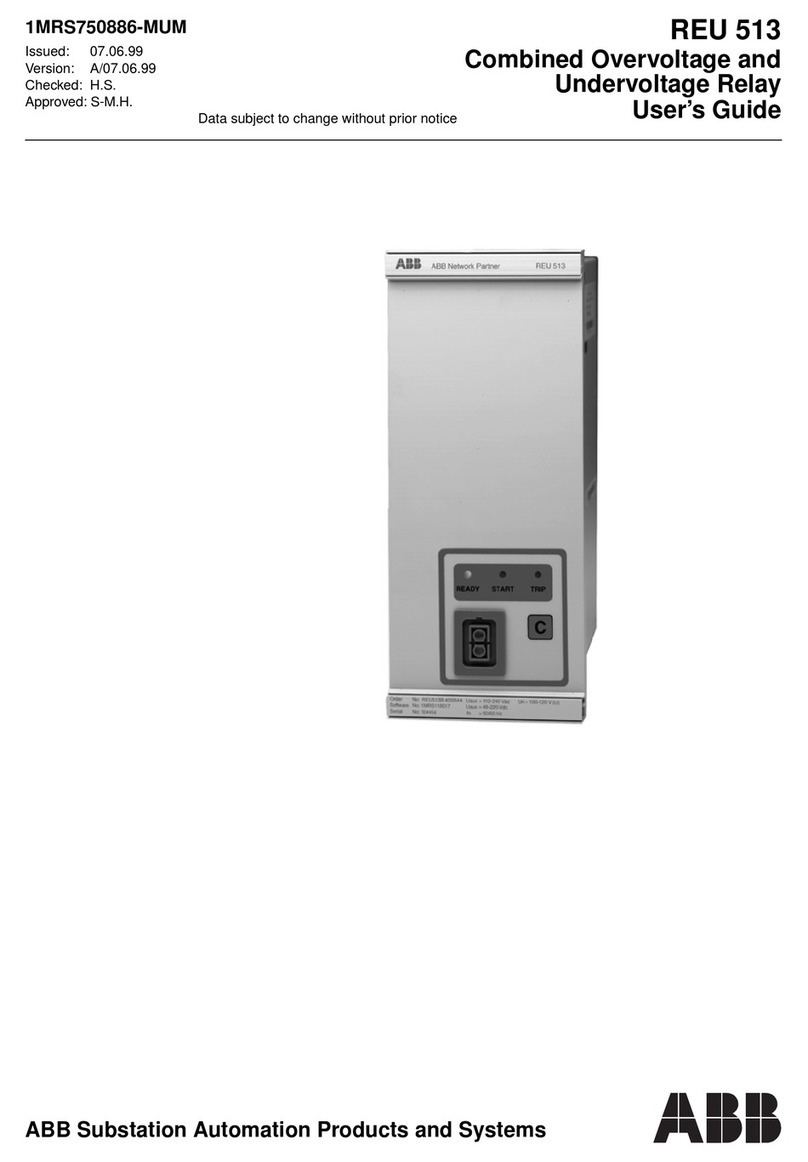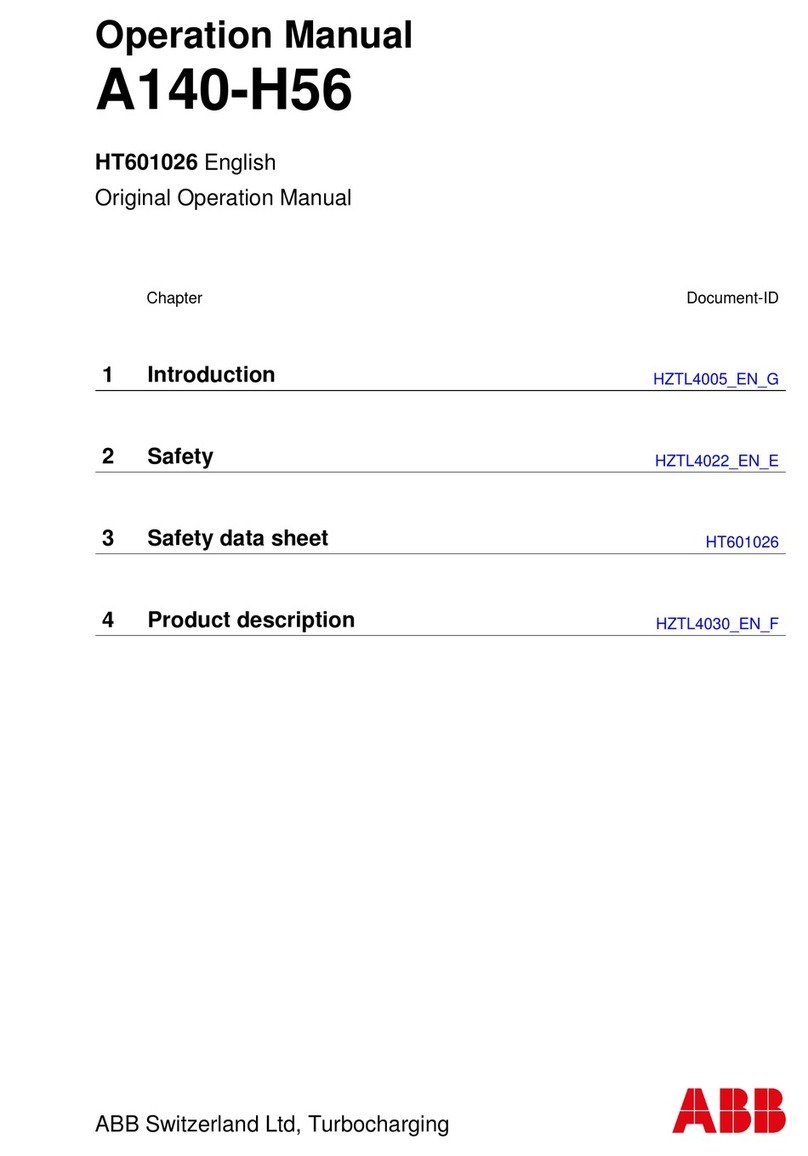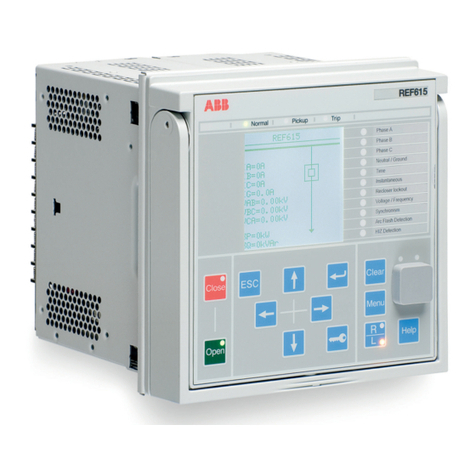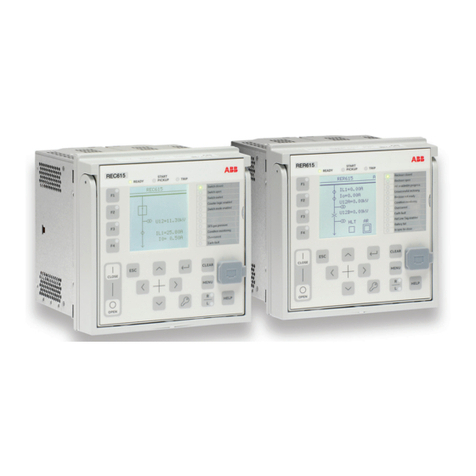
3
Application The overcurrent relay SPAJ 131 C is designed
to be used for two-stage phase overcurrent pro-
tectionofdistributionfeeders,largelow-voltage
motors,high-voltagemotors,medium-sizedand
large generators and power transformers. The
relay can be used both as main protection relay
and back-up protection relay.
The relay has two protection stages: a low-set
overcurrent stage I> and a high-set overcurrent
stage I>>. The low-set stage operates with defi-
nite-time characteristic or with inverse-time
characteristic, while the high-set stage operates
with definite time characteristic only.
The overcurrent relay is provided with five
outputrelays,of whichfourarefreely configur-
ableforthedesiredfunction.Twooftheoutput
relays have heavy-duty contacts capable of di-
rectly controlling a circuit breaker.
TheovercurrentrelaySPAJ131Cisasecondary
relaythatisconnectedtothecurrenttransform-
ersoftheprotectedobject.Therelaycanbeused
forsingle-phase,two-phaseorthree-phaseover-
current protection. The overcurrent relay con-
tinuously measures the phase currents of the
object to be protected. On the occurrence of a
fault the overcurrent relay generates an alarm
signal,tripsthe circuitbreakerorstarts external
auto-reclose functions, in accordance with the
current application.
When the phase current exceeds the set start
value I> of the low-set stage, the overcurrent
relay starts. When, at definite time operation,
the set operate time t> or, at inverse definite
minimum time (IDMT) operation, the calcu-
latedoperatetimet>,expires,therelayoperates.
Inthesamewaythehigh-setstagestartsonceits
setstart valueI>>is exceededand, whentheset
operate time t>> expires, the relay operates.
Thelow-setstageoftheovercurrentrelaycanbe
given either definite-time or inverse-time char-
acteristic. At inverse time characteristic four
inverse time curve sets with different slopes are
available: Normal inverse, Very inverse, Ex-
tremely inverse and Long-time inverse. These
curvesetscomplywiththeBS142andIEC255
standards.
The start signals from the overcurrent relay are
obtainableascontactfunctions.Thestartsignal
canbeused,forinstance,forblockingcooperat-
ing protection relays.
The relay contains one optically isolated logic
input for incoming external control signals,
generally blocking signals.
Description
of operation
Three-phase low-set overcurrent stage
with definite time or inverse definite
minimum time operation characteristic
Three-phase high-set overcurrent stage
with instantaneous or definite time
operation characteristic
Blocking of high-set and/or low-set overcurrent
stages by external control signal
Serial communication
51
50
Tripping 1
Tripping 2
Start 1
IRF
Signal 1
Serial port
Blocking
I
L1
I
L2
I
L3
Fig. 1. Protection functions of the overcurrent relay SPAJ 131 C. The encircled numbers refer to
theANSI(=AmericanNationalStandardsInstitute)numberoftheconcernedprotectionfunction.

